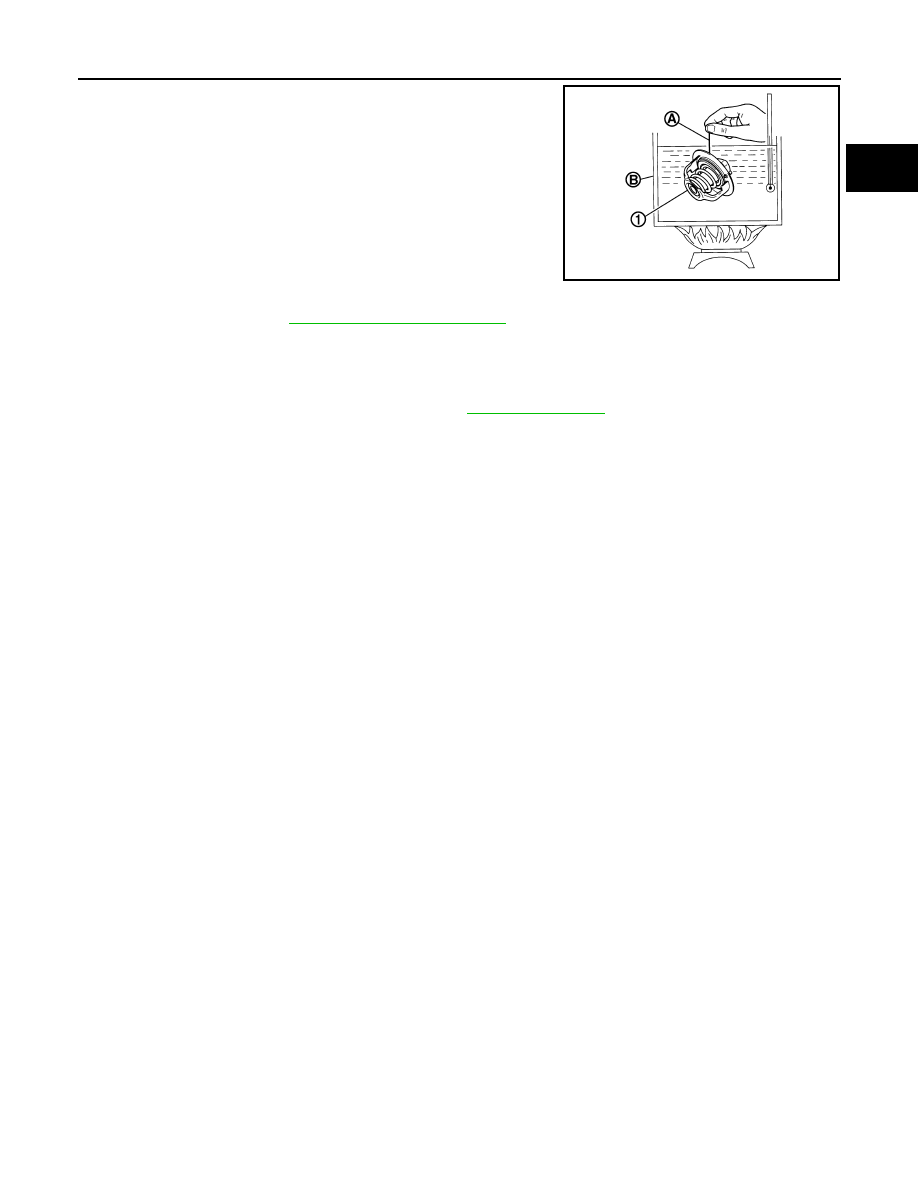Nissan Juke F15. Manual - part 186

WATER OUTLET
CO-27
< REMOVAL AND INSTALLATION >
[MR FOR NISMO RS MODELS]
C
D
E
F
G
H
I
J
K
L
M
A
CO
N
P
O
• Place a thread (A) so that it is caught in the valves of water control
valve (1). Immerse fully in a container (B) filled with water. Heat
while stirring.
• The valve opening temperature is the temperature at which the
valve opens and falls from the thread.
• Continue heating. Check the continuous valve lifting toward maxi-
mum valve lift.
NOTE:
The maximum valve lift amount standard temperature for water
control valve is the reference value.
• After checking the maximum valve lift amount, lower the water
temperature and check the valve closing temperature.
• If out of the standard, replace water control valve.
INSPECTION AFTER INSTALLATION
• Check for leakage of engine coolant using the radiator cap tester adapter (commercial service tool) and the
radiator cap tester (commercial service tool). Refer to
• Start and warm up the engine. Check visually that there is no leakage of engine coolant.
Standard:
Refer to
.
PBIC3314J